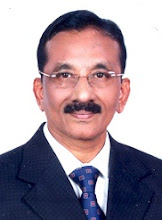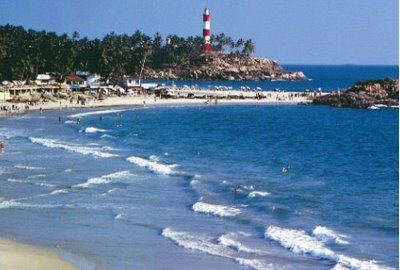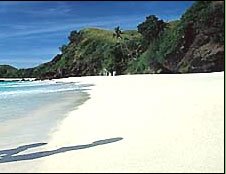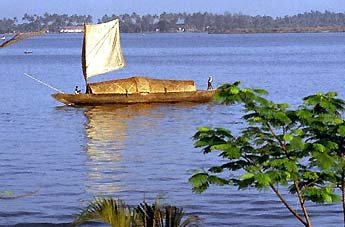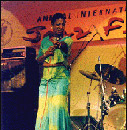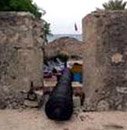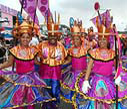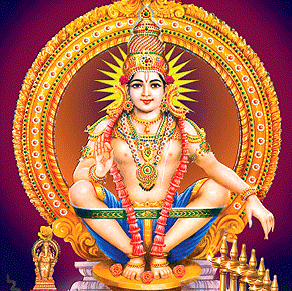
Sabarimala is a renowned pilgrim centre atop the rugged hills of the Western Ghats. This holy shrine is dedicated to Lord Ayappa. The main pilgrimage is undertaken between November and January.
There are two main rituals called the Mandal Puja and the Makara Sankranti Puja, which is celebrated from November to mid-January in Kerala during which time, the devotees perform austerities and penance.
The Pilgrimage
Devotees undergo rigorous penance and austere living before starting on the pilgrimage. Regardless of caste, creed and colour they wear black dhoties and carry on their heads, bundles containing traditional offerings like coconuts filled with ghee, camphor and rice.
The temple dome is covered with gold and the devotees break the coconuts before climbing the steps. Among the pilgrims, there are a few who are undertaking the pilgrimage for the first time while ther are a few who have been doing so for the past many years.
The first timers are known as 'Kanni Swamis' and the leader of the group is known as 'Guru Swami' or the lead person of a team who is incharge of all the rituals.
Devotees take a ritual bath while climbing up the hill in the holy river Pamba, which absolves one's sins. En route at Erumeli, in a supreme instance of communal harmony, they pay obeisance at the shrine of Vavar, a Muslim deity believed to be a close ally of Lord Ayyappa.
To ease the ardour of the long trek through the forests to the temple at the peak of the Sabari Hills, devotees constantly chant the name of the holy one. No women in the fertility age group are allowed into the precincts of the shrine of the Lord who is considered to be an Eternal Bachelor.
Makaravillakku At Sabarimala Festival
FestivalMakara Vilakku Pooja is a seven-day festival conducted annually in the famous Ayyappa Temple at Sabarimala. The festival begins on the auspicious day of Makara Sankranthi, the day on which the sun is in summer solstice (vernal equinox). This is also the first day of the Malayalese month of Makaram. Makara Vilakku Pooja commemorates the day on which idol of Lord Ayyappa or Dharma Sastha was enshrined in the temple and is the most important event to be conducted at Sabarimala. Thousands of devotees gather to participate in the celebrations of Makara Vilakku every year. Mandala Pooja festival extends to 41 days prior to Makara Sankranthi.
Importance of Sabarimala Shrine
Ayyappa Temple at Sabarimala in Pathanamthitta district of Kerala is the most sacred pilgrimage centre for the people of Kerala. Presiding deity of Sabarimala shrine is Lord Ayyappa known as Dharma Sastha, a symbol of unity between Vaishnavites and Saivites. This is so because, Ayappan is said to be born of union between Lord Vishnu and Shiva when the former took the avatar of Mohini, the seductress. Shiva succumbed to the charms of Mohini and Ayappa was born out of this union. Hence Ayappa is also called 'Hari Hara Putra' where 'Hari' is Vishnu, 'Hara' is Shiva and 'Putra' means son. No wonder, Sabarimala attracts lakhs of devotees from across the country particularly, southern states of India every year.
What makes the shrine so much more interesting is the rugged terrain on which it is located. The spirit of the thousands of devotees must be saluted who walk this terrain on foot as no other means of transport function in the rough stretches of Western Ghats where Sabarimala is located. Pilgrims have to make their way through the dense forests housing wild animals. For the lovers of adventure, there is a mandatory, 5 km stretch from Pamba to the shrine which can be passed only by trekking. Pilgrimage to Sabarimala requires a lot of prior preparations and is not advisable on all times. It is open only from November to January.
Ceremonies and Celebrations during Makar Villaku
One very important ceremony of Makara Villaku is the bringing of deity's jewellery, Thirivabharanam from the Pandalam Palace, three days prior to Makara Sankranthi. The sacred jewelry is kept in a box and is brought in a royal procession. Thousands of devotees line up on either side of the route for a glimpse of the box, which is carried by a priest, or oracle on his head. The oracle moves hysterically oblivious of the presence of thousands of people. He dances, but the box remains on his head as if it gets glued on his head. Procession halts at a few temples en route and reaches Sabaripettam in the evening of Makara Sankranthi. It then moves towards Sannidhanam amidst music, dazzling lights and lot of revelry. A strange phenomenon occurs at this time. A kite appears all of a sudden and starts hovering around the box. The incidence is well received by the devotees who get filled with joy.
The jewelery consists of a diamond crown, gold bracelets and necklaces studded with precious gems, Lord's swords, silver arrows and gold images of elephant, horse and leopard. Thousands gather for that dazzling glimpse of a fully ornamented deity.
The other spectacular event is the appearance of 'Makarajyothi' in the north-east horizon on Ponnambala Medu. Chants of 'Swamiye Saranam Ayyappa' reverberate as the devotees turn ecstatic on the strange occurrence.
Makara Vilakku poojas and ceremonies are performed on the 'Manimandapa' (sacred platform) near the Devi shrine where a picture of Sastha riding on a leopard's back is depicted. After the pooja, Malikappurath Amma is mounted on an elephant's back and carried in a procession comprising of torchbearers, drummers, buglers etc. to Pathinettampadi. The procession halts for sometime and shouts a call for Vettavili (hunting) and returns after circumabulating the main temple.
Festivities continue for seven days and culminate with 'Guruthi'. In this offerings are made to the Lord. The temple is vacated after Guruthi. Nobody remains inside as a tradition.
On the last day of the Makara Vilakku celebrations, which is Makaram 5th morning, a 'Ganapati Homam' is conducted at the temple. Later the Thiruvabharanams are removed. After performing some more rituals the procession makes its return journey along with the Thiruvabharanam.
 ar in Kerala and is followed as a ritual in every household during ten-day-long Onam celebrations.
ar in Kerala and is followed as a ritual in every household during ten-day-long Onam celebrations. esiccated coconut or artificial flowers is prohibited. Pookalams are normally laid on the front court yard of the house. Idols of Mahabali and Vishnu are placed in the center of the Pookalam and worshiped. Diameter of a Pookalam normally ranges from four to five meters.
esiccated coconut or artificial flowers is prohibited. Pookalams are normally laid on the front court yard of the house. Idols of Mahabali and Vishnu are placed in the center of the Pookalam and worshiped. Diameter of a Pookalam normally ranges from four to five meters. cas Aspera), Kakka Poovu, Thechipoovu, Mukkutti (little tree plant), Chemparathy (shoe flower), Aripoo or Konginipoo (Lantana), Hanuman Kireedom (Red pagoda plant) and Chethi (Ixora). Of all these flowers, Thumba flowers are given more importance in Pookalam as they are small in size and glitter in the the soft rays of the sun. 'Thumba Poo' is also considered to be the favourite flower of Lord Shiva and King Mahabali was a devout worshipper of Shiva.
cas Aspera), Kakka Poovu, Thechipoovu, Mukkutti (little tree plant), Chemparathy (shoe flower), Aripoo or Konginipoo (Lantana), Hanuman Kireedom (Red pagoda plant) and Chethi (Ixora). Of all these flowers, Thumba flowers are given more importance in Pookalam as they are small in size and glitter in the the soft rays of the sun. 'Thumba Poo' is also considered to be the favourite flower of Lord Shiva and King Mahabali was a devout worshipper of Shiva. 5 th day, called 'Ayilyam', Pookalam is decorated again. On the next day, called Magam, Pookalam is given a cut in its four corners with a knife. This marks the end of Pookalam decorations for the year. Some also follow the tradition of erecting a small pandal over the completed flower carpet and decorating it with colourful festoons.
5 th day, called 'Ayilyam', Pookalam is decorated again. On the next day, called Magam, Pookalam is given a cut in its four corners with a knife. This marks the end of Pookalam decorations for the year. Some also follow the tradition of erecting a small pandal over the completed flower carpet and decorating it with colourful festoons.